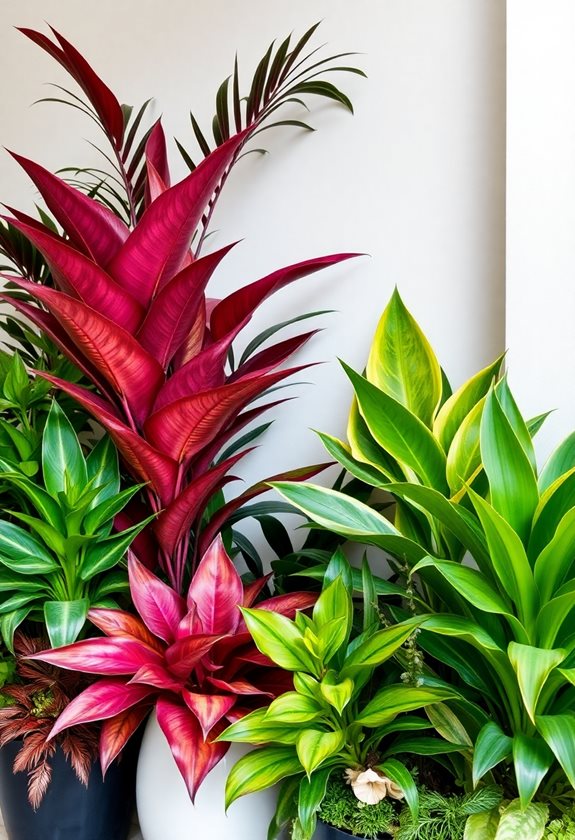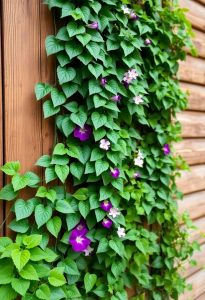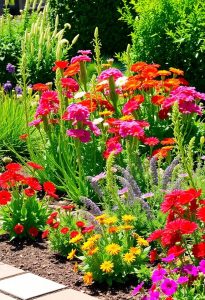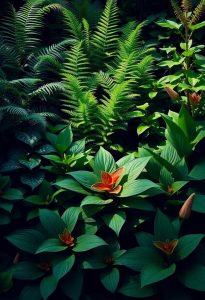If you’re ready to take your gardening game to the next level, consider these 7 high-maintenance exotic plants! Orchids enchant with their stunning beauty but need specific care, while Bougainvillea adds vibrant color and requires regular pruning. The Bird of Paradise is a showstopper, but it’s sensitive to frost. Heliconia loves moisture, and Fuchsia thrives in partial shade. Plus, don’t forget about the fascinating Passionflower! Are you up for the challenge? Stick around for more tips and tricks!
Design Highlights
- Orchids require specific humidity and light conditions, needing bright, indirect light and weekly watering without standing water.
- Heliconia thrives in rich, well-drained soil and demands regular moisture, making it high-maintenance.
- Fuchsia needs consistent moisture and partial shade, along with protection from frost for optimal growth.
- Bird of Paradise requires full sun and well-draining soil, needing regular watering and frost protection to thrive.
- Bougainvillea demands full sun, well-drained soil, and regular pruning, making it a vibrant but high-maintenance choice for gardeners.
Orchidaceae: The Enchanting Orchids
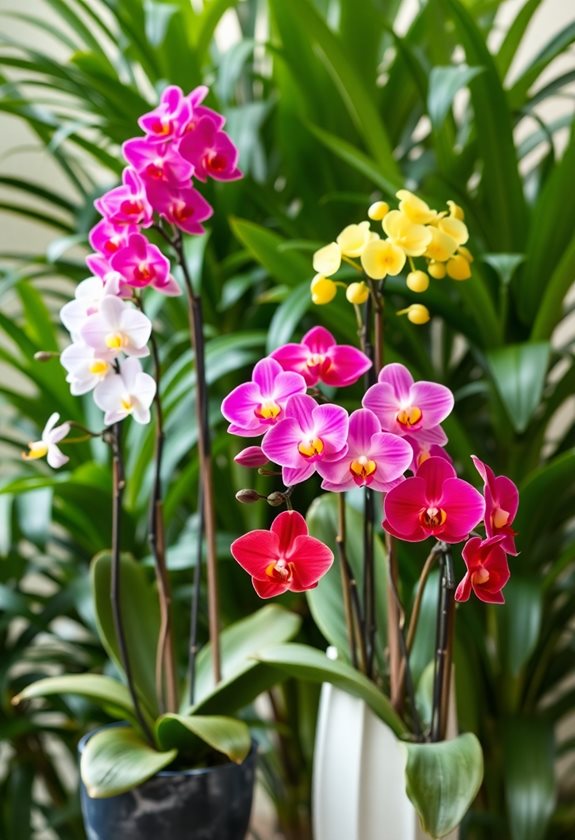
When you think of exotic plants, isn’t it hard not to picture the stunning beauty of orchids? These enchanting blooms captivate with their intricate shapes and vivid colors, but they’re not for the faint-hearted! Caring for orchids means understanding their specific needs, like humidity and light. Have you tried the potting mix that holds moisture yet drains well?
- Keep them in bright, indirect light.
- Water them weekly, but never let them sit in water.
I remember my first orchid struggle—too much sunlight turned those beautiful petals crispy! With patience and practice, you’ll find joy in nurturing these stunning wonders. Using the best soil for container gardening can significantly enhance their growth and health.
Bougainvillea: A Burst of Color
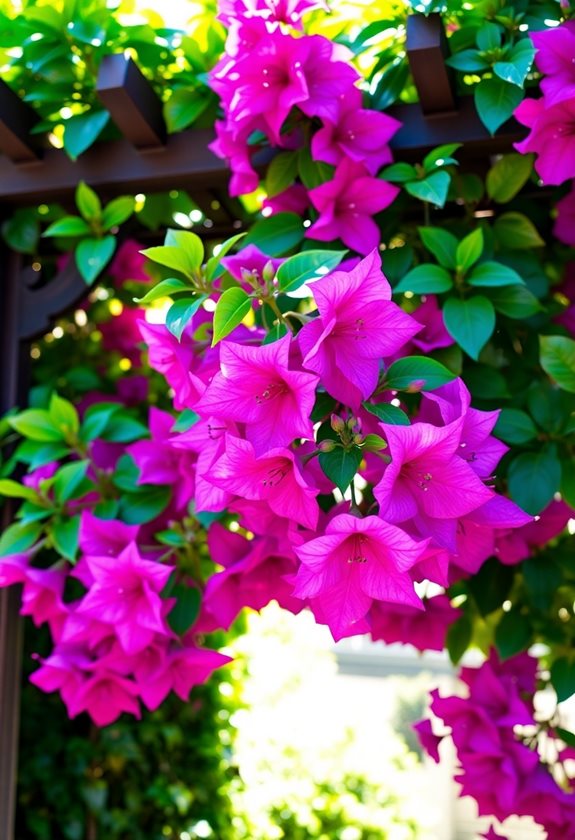
If you’re looking for a plant that packs a punch of color and personality, bougainvillea is your go-to choice! These vibrant climbers explode in hues of purple, pink, and orange, transforming any garden into a tropical paradise. Just imagine walking into your backyard and being greeted by a cascade of blooms! But don’t be fooled; bougainvillea requires dedication. It thrives in full sun and well-drained soil, so be sure to water sparingly. Pruning is essential for shape and growth. If you want to enhance your garden’s tranquility, consider incorporating a garden waterfall fountain to complement the stunning colors of your bougainvillea. Ready to embrace the challenge? Your garden will thank you with breathtaking beauty that’s sure to impress your neighbors!
Bird of Paradise: The Exotic Showstopper
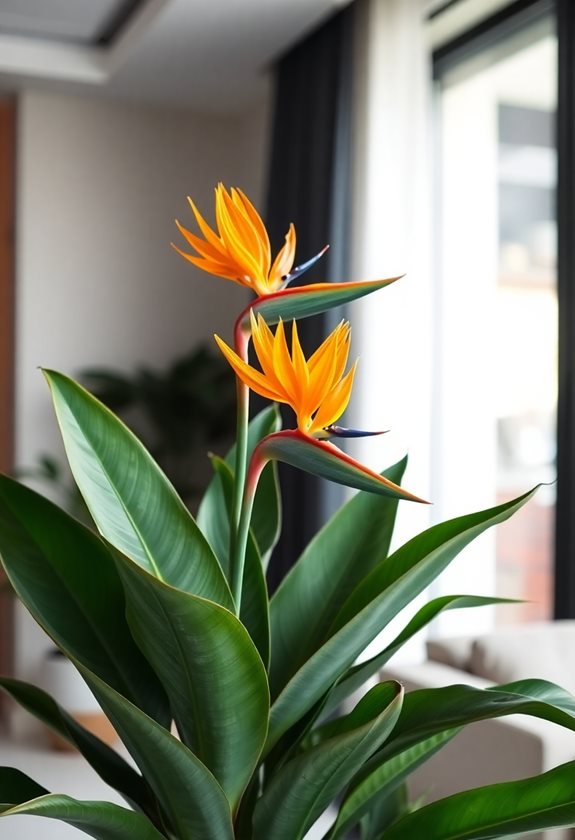
Imagine stepping into your garden and being greeted by the stunning, vibrant blooms of the Bird of Paradise—it’s like bringing a piece of the tropics right to your backyard! These eye-catching plants thrive in full sun and require well-draining soil. Don’t forget to water them regularly, but avoid soggy roots! Have you noticed their unique, bird-like flowers? They’re a hit for attracting pollinators. Just remember, they can be a bit fussy with temperatures, so protect them from frost. With dedication, you’ll enjoy this exotic showstopper that’ll have your friends asking, “Where’d you get that amazing plant?” Isn’t that the goal? Incorporating edible plants can enhance both beauty and flavor in your garden design.
Heliconia: The Jungle’s Bright Jewel
While you might think the tropics are far away, you can easily invite a slice of that paradise into your own garden with Heliconia, often called the jungle’s bright jewel. These stunning plants thrive in rich, well-drained soil and require plenty of sunlight. Don’t forget to water them regularly; they love moisture! Have you ever seen those vibrant, elongated flowers? They’re simply breathtaking! Just be prepared for a bit of fuss—Heliconia can be high-maintenance. But with passion and dedication, you’ll create a tropical oasis that dazzles. Additionally, incorporating best plants for year-round garden color can enhance your vibrant landscape. Are you ready to plunge into this colorful adventure? Let’s get gardening!
Alocasia: The Elephant Ear Plant
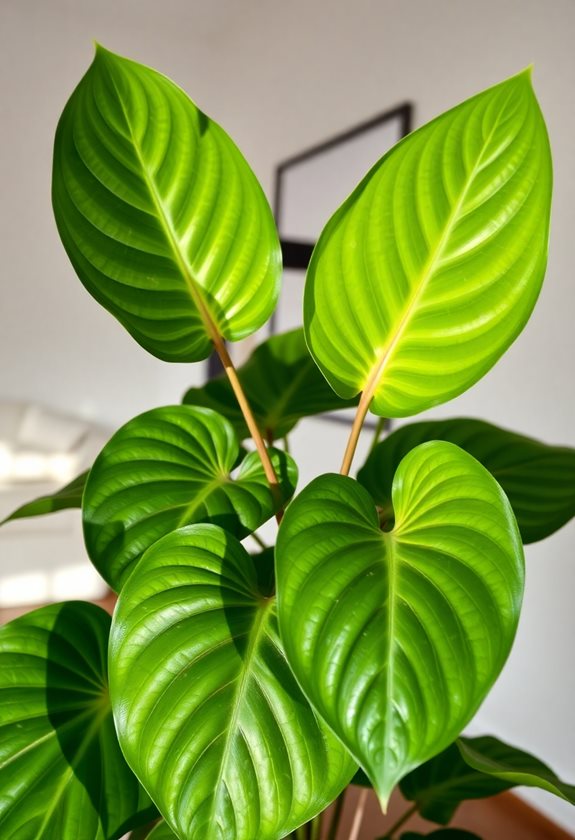
Alocasia, affectionately known as the Elephant Ear Plant, is a stunning addition to any garden, bringing a touch of the exotic right to your backyard. With its dramatic, oversized leaves, it feels like you’re nurturing a tropical paradise! But don’t be fooled—this beauty requires dedication. Keep it in bright, indirect light and provide humidity, or those gorgeous leaves might droop in despair. Regular watering is essential, but let the soil dry out between sessions. Have you considered using a pebble tray for moisture? Trust me, your Alocasia will reward you with lush growth, making every effort worthwhile! Additionally, while Alocasia is a beautiful choice, you might also want to explore drought-resistant plants for a more low-maintenance gardening experience.
Fuchsia: The Dainty Blooms
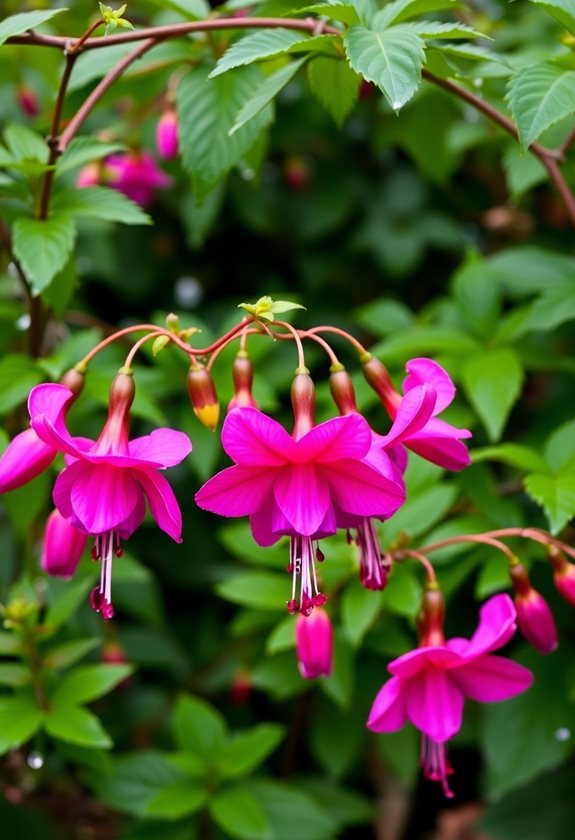
Fuchsia may just be the most charming plant you’ll ever invite into your garden! With their vibrant, dangling blooms, these beauties can instantly elevate any space. But don’t be fooled by their delicate appearance; fuchsias thrive on your attention. Make sure they get partial shade, consistent moisture, and well-draining soil. Have you ever watched a hummingbird hover near a fuchsia? It’s magical! Here’s a tip: pinch back the stems regularly to encourage bushier growth. And remember, these plants can be a tad picky about temperature, so protect them from frost. Additionally, consider pairing them with pollinator-attracting flowers to enhance your garden’s ecosystem. Ready to nurture these dainty gems? Your garden will thank you!
Passionflower: The Intriguing Climber
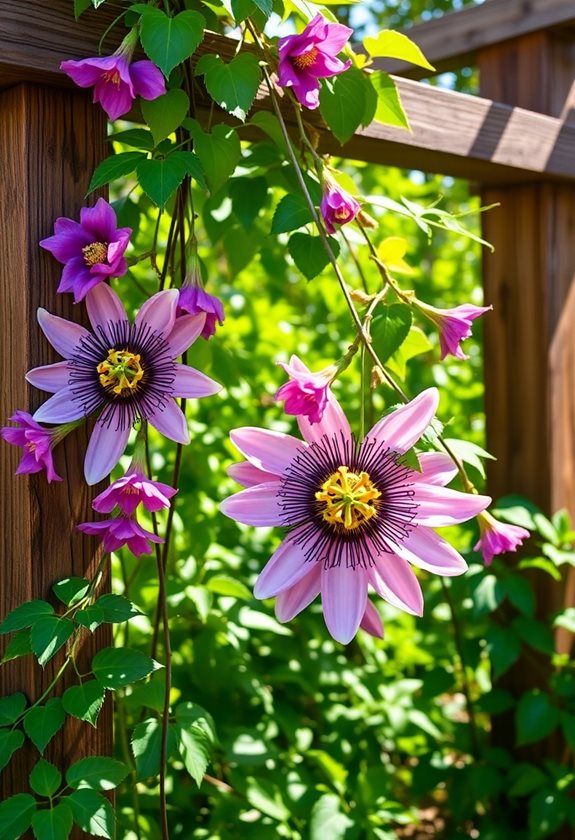
If you’ve ever dreamt of a garden that feels like it’s straight out of a fairy tale, passionflower might just be your secret weapon! This stunning climber can transform any ordinary space into a lush paradise. With its intricate blooms and vibrant colors, it’s impossible not to admire its beauty. But be warned—it requires attention!
Transform your garden into a fairy tale paradise with the enchanting beauty of passionflower!
- Provide enough sunlight and support.
- Keep the soil moist but not soggy.
In addition to regular care, consider its high-maintenance needs to ensure it thrives in your garden. Have you ever seen those delicate tendrils wrap around a trellis? It’s enchanting! Just remember, patience is key, and your garden will flourish into a dreamlike oasis!
Frequently Asked Questions
What Specific Lighting Conditions Do These Plants Require?
Imagine your plants basking in the sunlight, like kids playing on a warm summer day! For ideal growth, most exotic plants crave bright, indirect light. You’ll want to place them near a window, but avoid harsh, direct rays that can scorch their leaves. Consider using sheer curtains for a gentle touch. Rotate your plants weekly to guarantee even light exposure. Isn’t it amazing how a little attention can transform your garden into a paradise?
How Often Should I Fertilize These Exotic Plants?
You should fertilize those exotic plants every 4 to 6 weeks during their growing season. Think of it like feeding your favorite pet—regular nourishment keeps them happy and thriving! Use a balanced, water-soluble fertilizer, and don’t forget to dilute it to avoid burning the roots. Have you ever over-fertilized? It’s a real bummer! Just remember, a little goes a long way, and you’ll see your plants flourish in no time! Happy gardening!
What Pests Are Common With High-Maintenance Exotic Plants?
When you’re growing exotic plants, you might encounter some pesky pests! Common culprits include aphids, spider mites, and mealybugs. Have you ever seen tiny webs or sticky residue? That could be them! Regularly inspecting your plants helps catch these invaders early. Try using insecticidal soap or neem oil—trust me, they work wonders! Just remember, keeping your plants healthy and stress-free makes them less appealing to pests. Happy gardening!
Can These Plants Survive in Colder Climates?
Can these plants survive in colder climates? Well, it depends! Some high-maintenance exotic plants thrive in warmer weather, while others can adapt with a little extra care. Consider:
- Microclimates: Can you create a sheltered spot in your garden?
- Containers: Ever thought about bringing them indoors during winter?
- Mulching: This can protect roots from freezing.
With dedication, you might just succeed! Remember, gardening is about experimenting and learning from those challenges—embrace the adventure!
What Soil Composition Is Best for These Varieties?
What’s the secret to thriving plants? It all starts with the right soil composition! For those exotic varieties, you’ll want a mix of well-draining potting soil, perlite, and organic matter. Aim for a ratio of 60% potting soil, 30% perlite, and 10% compost. This blend guarantees your plants get the nutrients they crave while preventing root rot. Remember, happy roots equal happy plants—so let’s get your green thumb in gear!

